
Earth and Planetary Physics
Scope & Guideline
Innovating Research in Astronomy and Atmospheric Science
Introduction
Aims and Scopes
- Geophysical and Geodetic Studies:
Research that employs geophysical techniques to understand the internal structure and dynamics of the Earth and other planetary bodies, including seismic, magnetic, and gravity studies. - Planetary Atmospheres and Magnetospheres:
Investigations into the atmospheric dynamics, composition, and magnetospheric interactions of planets, particularly focusing on phenomena such as magnetic reconnection and ionospheric processes. - Climate and Environmental Changes:
Studies that analyze long-term climatic variations and environmental changes on Earth and other planets, including the impacts of solar activities and anthropogenic factors. - Seismology and Earthquake Mechanics:
Research focused on the mechanics of earthquakes, seismic monitoring, and the geodynamic implications of tectonic activities, including induced seismicity. - Radiation Belts and Space Weather:
Studies investigating the dynamics of radiation belts around planets, their interactions with solar wind, and the impacts of space weather on planetary atmospheres. - Comparative Planetology:
Research that draws comparisons between Earth and other celestial bodies to understand planetary formation, evolution, and surface processes. - Remote Sensing and Data Assimilation:
Use of satellite data and remote sensing techniques to monitor and model various geophysical phenomena, including atmospheric conditions and surface changes.
Trending and Emerging
- Machine Learning and Data-Driven Approaches:
The application of machine learning techniques for data analysis and predictive modeling is on the rise, enabling researchers to derive insights from vast datasets, especially in seismicity and atmospheric studies. - Interplanetary and Space Weather Interactions:
Increased focus on the interactions between solar wind and planetary atmospheres, particularly in the context of space weather and its effects on planetary bodies, including Mars and Jupiter. - Induced Seismicity and Geothermal Studies:
Research on induced seismicity related to geothermal energy extraction and other anthropogenic activities is gaining traction, reflecting growing concerns about the environmental impacts of such practices. - Advanced Remote Sensing Techniques:
The use of sophisticated remote sensing technologies, including satellite observations for atmospheric and surface monitoring, is becoming more prevalent, enhancing our understanding of planetary processes. - Comparative Planetary Studies:
There is a notable increase in comparative studies that explore similarities and differences between Earth and other planets, providing insights into planetary formation and evolution. - Climate Change Impacts on Geophysical Processes:
Research exploring the impacts of climate change on geophysical processes, including glacial movements and subsurface dynamics, is becoming more prominent, linking atmospheric science with geophysics.
Declining or Waning
- Traditional Geomagnetic Studies:
Research focusing solely on geomagnetic field measurements without integrating advanced modeling or simulation techniques has seen a decline as more comprehensive approaches gain favor. - Static Models of Earth Processes:
Studies relying on static models of geological processes are gradually being overshadowed by dynamic modeling techniques that account for time-dependent changes and interactions. - Localized Seismic Studies:
Investigations that focus on localized seismic events without broader regional or global context are becoming less common, as there is a growing emphasis on understanding seismicity within broader geodynamic frameworks.
Similar Journals
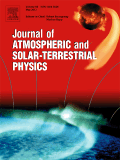
JOURNAL OF ATMOSPHERIC AND SOLAR-TERRESTRIAL PHYSICS
Exploring the Dynamics of Our Atmosphere and BeyondJournal of Atmospheric and Solar-Terrestrial Physics, published by Pergamon-Elsevier Science Ltd, stands as a pivotal academic resource in the realms of Atmospheric Science, Geophysics, and Space and Planetary Science. With an ISSN of 1364-6826 and an E-ISSN of 1879-1824, this journal encompasses a robust collection of research findings and reviews that address the intricacies of atmospheric processes and solar-terrestrial interactions. The journal has shown consistent academic performance, earning commendable rankings in 2023, including Q3 in Atmospheric Science and Q2 in Geophysics, reflecting its importance for scholarly communication and advancement in these fields. Spanning an impressive convergence of research from 1997 to 2024, it aims to foster interdisciplinary collaboration and inspire innovations among researchers, professionals, and students. Although it currently does not offer open access, the journal is committed to disseminating high-quality content that continues to drive forward our understanding of complex environmental phenomena.

SOLAR PHYSICS
Pioneering Solar Research: Bridging Theory and ObservationSOLAR PHYSICS, published by SPRINGER, serves as a pivotal platform for the dissemination of groundbreaking research in the fields of Astronomy and Astrophysics, as well as Space and Planetary Science. With an impressive impact factor and ranked Q2 in both categories as of 2023, this esteemed journal has become integral for scholars seeking to advance their knowledge in solar phenomena and related disciplines. Originating from the Netherlands and converging from 1967 to 2024, SOLAR PHYSICS features a diverse array of articles, from observational studies to theoretical analyses, contributing significantly to our understanding of solar activity and its influence on the heliosphere and beyond. Researchers, professionals, and students alike will find this journal an indispensable resource for current trends and comprehensive insights in solar research.
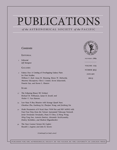
PUBLICATIONS OF THE ASTRONOMICAL SOCIETY OF THE PACIFIC
Illuminating the Cosmos with Groundbreaking ResearchPublications of the Astronomical Society of the Pacific is a prestigious journal dedicated to advancing the fields of Astronomy and Astrophysics, as well as Space and Planetary Science. Published by IOP Publishing Ltd, this influential journal plays a critical role in disseminating groundbreaking research and innovative findings. With an impressive Q1 ranking in both related categories according to the 2023 metrics, it is recognized among the top journals in its field. As a vital resource for researchers, professionals, and students alike, the journal covers a range of topics relevant to current astronomical research from 1996 to 2024. Although it does not offer open access options, the journal is highly regarded in academic circles, evidenced by its competitive ranking in Scopus—20th in Astronomy and Astrophysics and 26th in Space and Planetary Science. This commitment to excellence ensures that it remains an essential platform for sharing the latest insights in the ever-evolving universe.

SOLAR SYSTEM RESEARCH
Unveiling the Secrets of Celestial BodiesSOLAR SYSTEM RESEARCH, published by Pleides Publishing Inc, offers a comprehensive platform for the exploration and dissemination of scientific knowledge in the fields of Astronomy, Astrophysics, and Space and Planetary Science. With its origins tracing back to 1969, this journal provides a vital resource for researchers and professionals seeking to deepen their understanding of the solar system's complexities, including planetary formation, extraterrestrial geology, and the dynamics of celestial bodies. Although categorized in the Q4 quartile for both relevant disciplines, SOLAR SYSTEM RESEARCH remains committed to publishing high-quality research that contributes to advancing contemporary scientific discourse. Dedicated to fostering collaboration and innovation, the journal is indexed in Scopus and adheres to rigorous academic standards, making it an essential resource for students and professionals alike pursuing the latest developments in solar system studies.
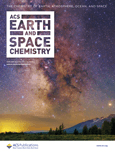
ACS Earth and Space Chemistry
Advancing Knowledge at the Intersection of Earth and SpaceACS Earth and Space Chemistry is a leading journal published by the American Chemical Society, dedicated to advancing the interdisciplinary fields of atmospheric science, geochemistry, and planetary science. Since its inception in 2017, this journal has quickly established itself as a pivotal resource for researchers and professionals, boasting an impressive impact factor and securing its position in Q2 of the Scopus rankings for 2023 across its relevant categories. The journal publishes cutting-edge research articles, reviews, and commentaries that explore the chemical processes influencing Earth and space environments. By providing open access to invaluable research from experts around the globe, it encourages collaboration and dissemination of knowledge, crucial for addressing pressing environmental and planetary challenges. Situated in the heart of Washington, D.C., the journal's editorial office works diligently to ensure rigorous peer review and high-quality publications that meet the needs of its diverse audience, including scholars and students keen to stay abreast of developments in these dynamic fields.

EXPERIMENTAL ASTRONOMY
Transforming Observations into UnderstandingEXPERIMENTAL ASTRONOMY, published by Springer, stands as a pivotal journal in the fields of Astronomy and Astrophysics as well as Space and Planetary Science. With an impressive Scopus ranking and a Q2 category as of 2023, the journal is recognized for its impactful contributions to experimental techniques and observations in astronomy. Covering a broad spectrum of topics from cosmic phenomena to planetary exploration, it serves as a vital platform for researchers, professionals, and students to disseminate and discuss innovative ideas and findings. The journal has evolved through various convergence years since its inception in 1989 and continues to thrive, fostering an environment for academic pursuit and collaboration. Though not an open-access journal, its rigorous peer-review process ensures high-quality publications that are essential for advancing the scientific community's understanding of the universe.
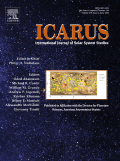
ICARUS
Illuminating the Universe Through Rigorous Research.ICARUS is a prominent peer-reviewed journal dedicated to advancing knowledge in the realm of Astronomy and Astrophysics, as well as Space and Planetary Science. Published by Academic Press Inc, Elsevier Science, this esteemed journal has been contributing to the scientific discourse since 1962 and will continue to do so well into 2024. With an impressive impact factor placing it in the Q2 quartile, ICARUS ranks among the top journals in its field, standing appropriately at #22 out of 90 in Astronomy and Astrophysics and #27 out of 104 in Space and Planetary Science according to Scopus metrics. Researchers, professionals, and students alike benefit from its comprehensive scope, which encompasses a wide array of topics related to planetary processes, space exploration, and astrophysical phenomena. Although it does not currently offer open access, the journal remains a critical resource for scholars seeking to disseminate their findings and engage with cutting-edge research in the exciting fields of astronomy and planetary science.

COSMIC RESEARCH
Illuminating the Mysteries of the CosmosCOSMIC RESEARCH is a prestigious academic journal dedicated to advancing the field of space science, particularly within the domains of aerospace engineering, astronomy, and planetary science. Published by MAIK NAUKA/INTERPERIODICA/SPRINGER, this journal has been a significant contributor to the scholarly discourse since its inception in 1968, with converged years showing robust publication activity until 2024. With a Q4 category ranking in various disciplines, including aerospace engineering, astronomy, and space science, the journal serves as a platform for disseminating innovative research and comprehensive reviews. Although not currently offering open access, COSMIC RESEARCH is renowned for its rigorous peer-review process, ensuring that only high-quality research is shared with the academic community. The journal's ISSN is 0010-9525 and its E-ISSN is 1608-3075. Researchers, professionals, and students alike can benefit from the insights and findings presented in this journal, making it an essential resource for anyone involved in the exploration of cosmic phenomena.

EARTH PLANETS AND SPACE
Pioneering Research in Earth and Space SciencesEARTH PLANETS AND SPACE, published by Springer and based in Switzerland, is a distinguished journal that plays a pivotal role in advancing the fields of Earth and planetary sciences. With an impactful presence in both geology (Q1) and space and planetary science (Q2), this journal is increasingly recognized for its contributions to understanding complex geoscientific processes and extraterrestrial phenomena. The journal has been a vital resource for researchers since its inception in 1996 and is anticipated to continue this legacy until at least 2024. It ranks impressively within the Scopus database, holding the 53rd position out of 321 in Earth and Planetary Sciences for Geology and the 30th position out of 104 for Space and Planetary Science, reflecting a robust percentile standing of 83 and 71, respectively. With open access options available, EARTH PLANETS AND SPACE makes cutting-edge research more accessible to a global audience, fostering collaboration and innovation. This journal is essential for anyone seeking to deepen their knowledge or stay current with trends in Earth sciences and planetary exploration.
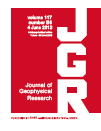
JOURNAL OF GEOPHYSICAL RESEARCH-SOLID EARTH
Leading the Charge in Solid Earth DiscoveriesJOURNAL OF GEOPHYSICAL RESEARCH-SOLID EARTH is a prestigious journal published by the American Geophysical Union, dedicated to advancing the study of solid Earth sciences. With an ISSN of 2169-9313 and E-ISSN of 2169-9356, it serves as a leading platform for rigorous research findings and innovative advancements within the fields of Earth and Planetary Sciences, Geochemistry and Petrology, Geophysics, and Space and Planetary Science. The journal has achieved an impressive Q1 quartile ranking across these categories, reflecting its high impact in the academic community and underscoring its role in influencing scientific discourse. Notably, it holds an esteemed position in Scopus, ranking 15th among 159 journals in Earth and Planetary Sciences (miscellaneous) as well as within the top 20 in several other geophysical domains. Researchers and practitioners are encouraged to contribute their work to this esteemed journal, which publishes comprehensive articles from 1979 to the present, thus providing a crucial repository of knowledge for those engaged in solid Earth research. Although it does not currently offer Open Access options, the journal's prestigious reputation ensures its articles reach a wide audience of academics, professionals, and students alike, fueling a deeper understanding of our planet's processes and challenges.